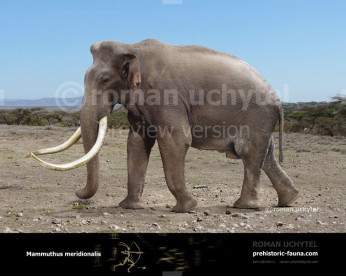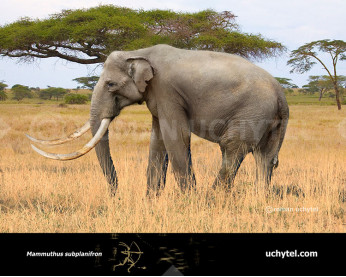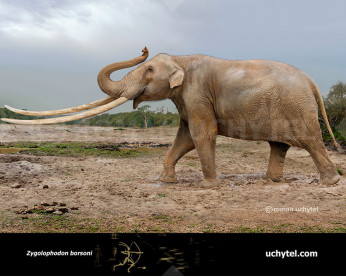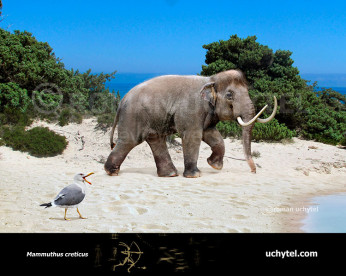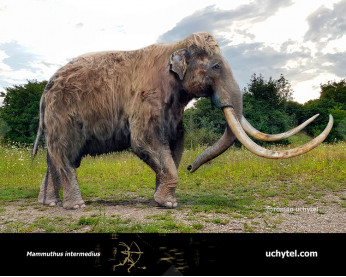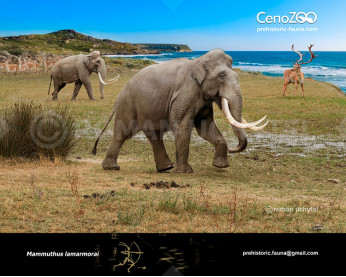Mammuthus trogontherii (Steppe mammoth)
264264Steppe mammoth, Mammuthus trogontherii, Mammuthus sungari or Mammuthus armeniacus (Mammuthus trogontherii Pohlig, 1885)
Order: Proboscidea
Family: Elephantidae
Dimensions: 7 metres in length with 2.7 metres long tusks. Height - 4-4,7 m, weight - 10.000 kg
Temporal range: during the Middle Pleistocene, 600.000 - 370.000 years ago (Eurasia)
The steppe mammoth or Mammuthus trogontherii is one of the biggest proboscidea of all time. It lived on the territory of today’s Eurasia in the Pleistocene age and went extinct more than 300.000 years ago. The weight of this giant reached up to 10 tons and its height was 4 meters at the shoulders. Its five-meter tusks were not as curved the more recent wooly mammoth, the steppe mammoth’s descendant.
Mammuthus trogontherii lived in steppe regions and forest land. They also were one of the first species that adapted well to cold regions due to its thick fur. The steppe mammoth was definitively forced out by the wooly mammoth, which appeared about 250 thousand years ago as a branch of Mammuthus trogontherii.
A completely preserved skeleton of this animal was found in 1996 near the Serbian town Kikinda and was exhibited in a local museum. The skeleton belongs to a female 4.7 m in height and with tusks 3.5 meters in length. Its weight is estimated as 7 tons. It is quite probable that males of steppe mammoth were even larger and had more massive tusks.
Steppe mammoth, Mammuthus trogontherii, Mammuthus sungari or Mammuthus armeniacus (Mammuthus trogontherii Pohlig, 1885)
Order: Proboscidea
Family: Elephantidae
Dimensions: 7 metres in length with 2.7 metres long tusks. Height - 4-4,7 m, weight - 10.000 kg
Temporal range: during the Middle Pleistocene, 600.000 - 370.000 years ago (Eurasia)
The steppe mammoth or Mammuthus trogontherii is one of the biggest proboscidea of all time. It lived on the territory of today’s Eurasia in the Pleistocene age and went extinct more than 300.000 years ago. The weight of this giant reached up to 10 tons and its height was 4 meters at the shoulders. Its five-meter tusks were not as curved the more recent wooly mammoth, the steppe mammoth’s descendant.
Mammuthus trogontherii lived in steppe regions and forest land. They also were one of the first species that adapted well to cold regions due to its thick fur. The steppe mammoth was definitively forced out by the wooly mammoth, which appeared about 250 thousand years ago as a branch of Mammuthus trogontherii.
A completely preserved skeleton of this animal was found in 1996 near the Serbian town Kikinda and was exhibited in a local museum. The skeleton belongs to a female 4.7 m in height and with tusks 3.5 meters in length. Its weight is estimated as 7 tons. It is quite probable that males of steppe mammoth were even larger and had more massive tusks.


-797x638.jpg)
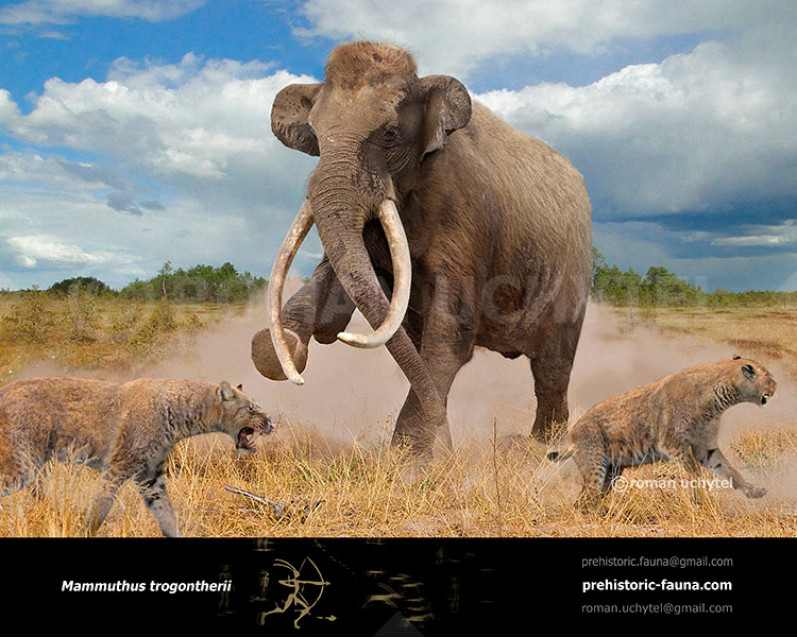
2-797x638.jpg)
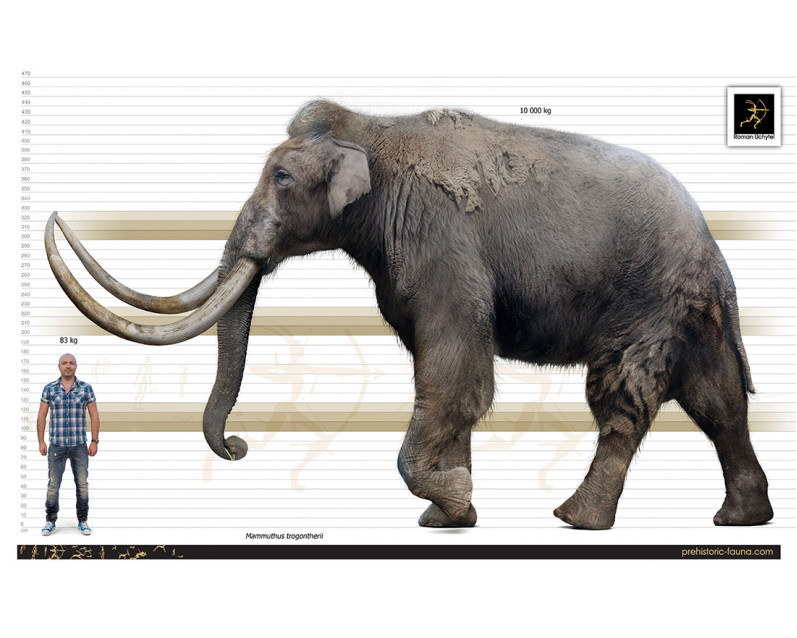

-70x56.jpg)

2-70x56.jpg)

-346x277.jpg)
-346x277.jpg)
